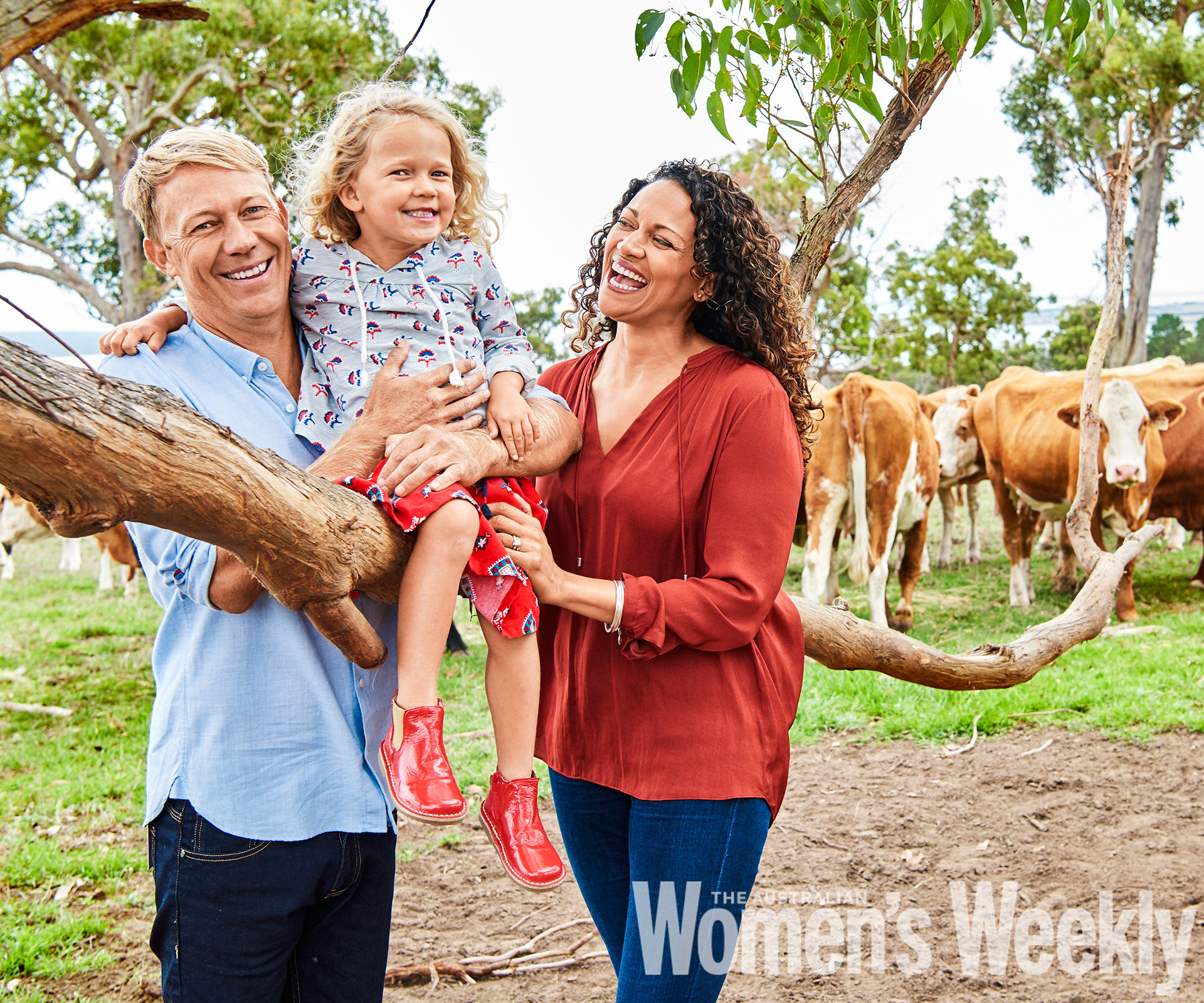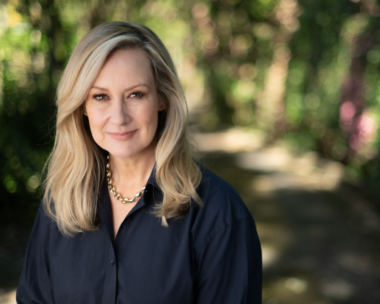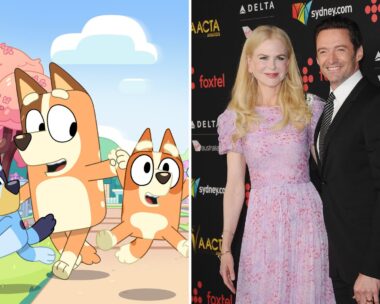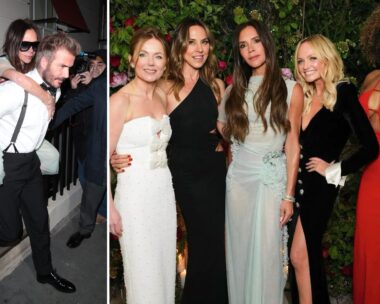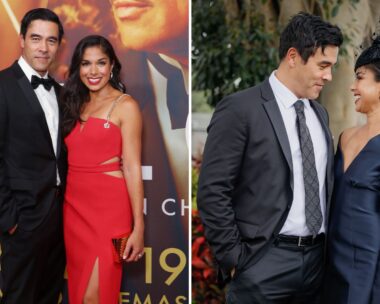Aminah Hart, a 42-year-old advertising executive, rocked with the movement of the tram as it rattled towards her home in Melbourne. In her hands, she flicked through three pieces of paper – no photos – just the stark details of three sperm donors from whom she was to pick the future father of her intended child.
“I flicked through them each and scanned them for clues,” recalls Aminah, now 45. “But only one of them stood out. He said he was happy and already had four beautiful healthy children of his own.
“Those words ‘happy’ and ‘healthy’ leapt off the page at me. They were absolutely the two things I had not been able to make happen in my life – a healthy child and happiness. That was enough for me. In the absence of Mr Right, Mr Happy would have to do.”
As it turned out, Mr Happy was also Mr Right – it’s just that Aminah didn’t know it at the time. She pencilled him in as her anonymous sperm donor to father a child that she hoped would finally fill the emptiness she had felt since the death of her two sons years before.
“Being a mother and yet having no children is the hardest thing I’ve ever had to confront,” she says.
“I can’t express how difficult it is to have given birth, to have held my children in my arms and feel like a mother in every way, and yet not have children to parent. It’s like having a bottomless hole inside you.”
Aminah Hart’s remarkable story – in new book, How I Met Your Father (Allen & Unwin) – is a back-to-front love affair in which she used donor sperm to produce a longed-for child and then later met and fell in love with the donor. It is also a study in the resilience of the human spirit and the rewards that sometimes find both the generous and the hopeful.
Perhaps more than that, it is a modern love story that transcends negative impacts technology can have on our lives, reinforcing the notion of love as a powerful force.
Admittedly, Aminah didn’t know much about this man – just a few hints that made him seem like a normal, well-adjusted “Aussie bloke”. He was a cattle farmer, a blonde and the coach of a local football team. Other than that, his information sheet was enigmatically designated with the initials “SR”.
“I didn’t have any illusions about what I was embarking on,” says Aminah. “I knew using an anonymous sperm donor wouldn’t give me a fairytale family. But IVF could give me a child and a chance to feel complete.”
The problem was that, until then, life was anything but a fairytale. By the time she was 40, Aminah had had two children from two previous relationships. During her first relationship in England, she gave birth to a baby boy in 2005 she named Marlon.
What Aminah did not know when Marlon was born and would not know for years to come was that she carried an extremely rare genetic disorder – one in 50,000 births worldwide – known as X-linked myotubular myopathy, a condition which affects mostly male babies, limiting their muscle function so severely that they appear “floppy”, need help to move and often require a machine just to breathe.
The average life expectancy of children with X-linked myotubular myopathy is 29 months. Marlon died from pneumonia aged just 14 weeks; a tiny life extinguished far too early and before doctors properly diagnosed his condition.
Advised that the illness which claimed Marlon’s life was “highly” unlikely to strike again, particularly with a different father, Aminah had a second child three years later with another partner.
However, there are no guarantees, even in medical science. Aminah’s son Louis was also born with myotubular myopathy and the distinctive “floppiness” which characterises the condition. It was only with Louis’ birth and diagnosis that Aminah became aware of X-linked myotubular myopathy or what it meant.
Louis survived for 14 months, even becoming strong enough to breathe unaided, but died suddenly, Aminah feeling the final beats of his heart as she cradled him in the back of an ambulance on the way to hospital.
“The deaths of my sons were the greatest tragedies of my life,” she says. “I was devastated by Marlon’s death and by the realisation that Louis had the same affliction. There was also an awful sense of guilt because I realised then that I was the carrier of the glitch that had dislocated my boys from a normal life.
“I had conceived. I had given birth. But I was a mother without any children and despite the flaw in my genetics, I didn’t want to live with regret or the knowledge that I hadn’t tried everything to become who I knew I should be. So, for me, IVF wasn’t a choice so much as a necessity. It was my only chance.”
What followed were months of IVF procedures using donor sperm – harvesting her eggs, implantations, tests and failures. It was heartbreaking and frustrating, combined with an all-consuming fear that even if she conceived, she could lose another child.
The first cycle came and went. So did the second. Then, finally, in the third IVF cycle: success.
“I was over the moon,” recalls Aminah. “I was literally in tears and jumping for joy at the same time.”
Nine months later, Aminah held her daughter Leila in her arms – a happy, healthy baby girl. Aminah was able to breathe a sigh of relief mixed with the sad memory of her boys.
“I was able to say to myself, this is how it is meant to feel, but I still shed tears for Marlon and Louis,” she recalls.
“I knew that one day Leila would want to know where she came from. It was inevitable. I’m black – I have a West Indian father and an Australian mother. But Leila has blonde hair and fair skin. She looks nothing like me. Of course she would ask, ‘Who’s my dad?’”
Aminah and Leila’s story might have ended there with a normal trajectory for a single mother and child. What followed probably has more in common with detective fiction than a romance, but it leads to the same destination.
“It was the letters ‘SR’ that set me wondering,” says Aminah. “It must be a donor code, but I suddenly remembered when Leila was about a month old that you can find out the donor’s first name when your child is born. I called the registry and in a matter of moments, Mr Happy became Scott.”
Yet just a first name was too tantalising, especially for Aminah’s mother, Helen. “We also knew that
he was a Simmental cattle breeder,” explains Aminah.
“Mum looked up the Simmental Breeders Association website and the only registered breeder whose name started with an S was someone named S. Andersen, near Phillip Island, outside Melbourne.
“She Googled him and discovered that a Scott Andersen also coached the local footy team. She even found a photo of him presenting a trophy. Mum said, ‘I’ll bet that’s him’, and I said, ‘Yeah, that’ll be him for sure then’. But later, when I looked at the photo, I realised that he looked remarkably like Leila.”
After months spent wrestling with the perils of seeking contact with this mysterious man and what it might mean for her daughter’s relationship with him, Aminah finally contacted the Volunteer Register to request his details.
As the donor had ticked the box on his form saying he was happy to be contacted, the register soon provided the details Aminah sought – and the donor was indeed Scott Andersen.
They exchanged emails and photos of Leila during the next few months, and just after Leila’s first birthday they arranged to meet. “As I drove down to Philip Island with Leila, I had no idea of what might happen,” says Aminah. “I certainly didn’t think we would fall for each other and at first, we didn’t.”
Yet what they did discover during that first meeting was an easy rapport.
“I honestly felt a little embarrassed about it, to tell the truth,” says Scott, 44. “Being a sperm donor isn’t something that you really advertise or talk about. I’ve been married twice before and had four beautiful children, and I just thought it would be a nice way to help out other people who hadn’t been as lucky as me. But I wasn’t looking for a relationship.”
And yet, the rapport that they established only grew easier as they saw more of each other. “I think Scott fell for Leila long before he fell for me,” says Aminah. “He had this twinkle in his eye when he looked at her and that was very endearing. The other thing was that I found out that he was as down-to-earth and honest as I’d always hoped he was going to be.
“After I realised that, it wasn’t such a stretch to think that you might fall for someone who actually looks like the daughter that you love more than anything in the world.”
Scott says he knew he was falling in love during their fourth meeting. “We just talked. She started to tell me about her boys and what had happened. She’s so strong and obviously so beautiful. I think we could both feel it.
“Aminah said she wanted Leila to see me once a month and asked if it was all right for her to come along, too. I said, ‘Of course, I’m enjoying both of you.’ I think that was the moment for both of us, It was like, wow! And, later, the first time I kissed her, I knew that I wanted to marry her.”
Aminah and Scott married in a romantic cliff-top wedding ceremony in December last year, at Sorrento on the Mornington Peninsula, south of Melbourne. Leila, now four, was their flower girl.
“You could feel the love,” says Aminah. “It was everywhere around that day. If I didn’t know what we have is real, I’d be tempted to say it was all a fairytale. Of course, it is real and Leila has the father that I once thought she’d have. And I’ve found both the child and the happiness I always wanted.”
This story originally appeared in the April issue of The Australian Women’s Weekly.
